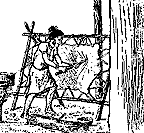Yat Kitischee – Manasota
The Culture of Yat Kitischee
The native people who lived at Yat Kitischee were associated with a prehistoric culture known as Manasota. This culture extended geographically from present day Sarasota County north to Tampa Bay. The Manasota culture evolved from the earlier Archaic cultures of mobile hunters and gatherers that began settling permanently along the west coast of Florida around 3000-4000 b.c. These Archaic peoples were themselves descendants of Florida’s first inhabitants, known to archaeologists as Paleo-Indians, who arrived here 12-14,000 years ago.
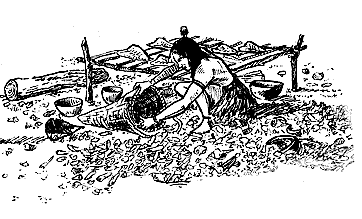
Unlike their Paleo-Indian and Archaic ancestors, the people of the Manasota culture were fully adapted to a coastal environment, and their archaeological sites contain artifacts and other features that reflect this adaptation. Manasota settlements are located in hammocks near bays and estuaries providing access to fish and shellfish, as well as terrestrial plants and animals in the nearby pine flatwoods and in freshwater streams and ponds.
Each settlement appears to have contained a few related families. When people died, they were buried near their home or in cemeteries located near the settlement. The absence of grave goods or any indication of differential treatment in death suggests that Manasota society was relatively egalitarian. Leadership in the community was probably based on individual ability, and was acquired rather than inherited. Villages in a region may have been integrated through marriage or trade networks.
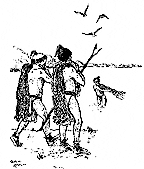
By a.d. 200 or so, Manasota peoples had begun to adopt some of the religious, ceremonial, and mortuary practices that were being practiced by neighboring cultures to the north. Archaeologists call this set of shared customs Weedon Island after the type site in St. Petersburg where their archaeological manifestations were first identified. There is some confusion about what Weedon Island is (or was), and not even archaeologists can agree on every detail. Basically Weedon Island consisted of a set of religious beliefs and associated rituals that helped people make sense of their world. Just as today people of different cultures sometimes share a common religion such as Hinduism or Catholicism, prehistoric peoples in north and west-central Florida adopted the religious and ceremonial practices of Weedon Island while retaining their local traditions of subsistence, family structure, technology, and social organization. The primary archaeological manifestation of this new ceremonialism was the use of sand burial mounds and the placement of ornately decorated pottery with the dead.
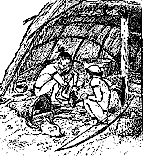
Around a.d. 900, another change took place-the emergence of the final prehistoric culture in the Tampa Bay area-Safety Harbor. This time the source of influence was from much farther away-the Mississippi Bottoms of the American midwest. Here, new political and ceremonial practices developed in response to increased population and the need to develop management measures to safeguard against famine and warfare. Safety Harbor society was highly stratified with a noble class, warriors, slaves, and peasants. Politics and religion were closely related, and political rulers were often believed to be gods who demanded respect and tribute in return for ensuring peace and prosperity.
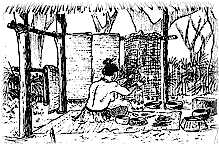
A hierarchy of site types reflects the unequal status of people within Safety Harbor society. Large ceremonial centers with flat-topped temple mounds were home to caciques, or supreme rulers, whose domains encompassed several smaller towns and hamlets. One of these temple towns, Tocobaga, was located at Phillipi Park near the modern town of Safety Harbor. Lesser rulers resided in smaller towns and collected tribute from the still smaller villages and hamlets like Yat Kitischee that dotted the landscape. Some of this tribute was kept by the local rulers and the rest was passed on to the supreme cacique. The territory of Tocobaga (part of which is depicted on the map on the inside front cover) included the temple towns at Pinellas Point, Maximo Point, and the Anderson site on Boca Ciega Bay.
